Humans don’t use their teeth for all that much. Okay, so we DO, but we’re not supposed to. (Admit it, you’re biting a pen or pencil right now) Dogs, on the other hand, use their teeth throughout their daily lives. Of course, those canine smiles go to work on meals, but there’s more to it. They pick up objects around the house and yard. And while not every breed’s as fastidious as a cat, dogs use their teeth for grooming. Those pearly whites serve important functions. Have you ever taken the time to give them proper consideration? Do you know much about dog teeth? How many teeth do dogs have in their mouths? What kinds of teeth are there? When do puppies get their teeth? If you haven’t considered those questions before, you probably are now. And we have all of the answers you’re looking for.
Dog Teeth: The Basics
When you consider structure, dog teeth don’t look all that different from ours. The inside of the tooth consists of pulp. The pulp holds the living tissue of the tooth. This includes the nerves and blood supply. It’s protected by three layers of organic minerals: cementum, dentine, and enamel. That’s where the difference comes in, though. “Dog teeth have significantly less enamel than humans: roughly 0.1-1 millimeter for dogs, and up to 2.5 millimeters for humans,” according to Dr. Brenda L. Mulherin, Board-Certified Veterinary Dentist and Clinical Professor at the Lloyd Veterinary Medical Center at Iowa State University. Enamel’s HARD, but dog teeth can break and erode easier than ours because of the thinner structure.
Types of Dog Teeth
Dogs have four types of teeth. (So do we) Moving from the front of the mouth to the back:
- Incisors: These small teeth sit in the very front. Your dog uses them to grab things and in the grooming process.
- Canines: Everyone knows the canines. They look like fangs. They have a slight curve, allowing for a better grip.
- Premolars: As you move further back, the teeth start to flatten out. Dogs use their premolars to grind up their food.
- Molars: These are the big teeth at the very back. They do the bulk of the grinding work, making food easy to swallow.
When you take your dog to the vet for a dental check-up, they use a dental chart to check every tooth. It helps the technician and doctor look for missing teeth and take notes on the health of the teeth that ARE there. They take measurements, note any damage, mark how bad the tartar may be, and record the treatments performed. The chart then becomes part of your dog’s medical record. Each time they go in, the vet can refer to the old chart to look for changes.
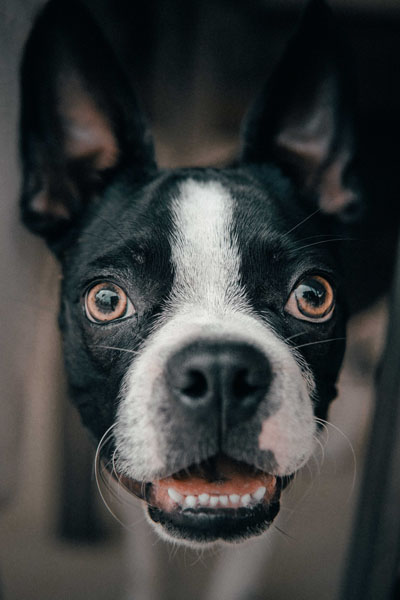
Puppies
Puppies are born without teeth. (For which mommy dogs are grateful) Around three weeks old, puppies start to develop tooth buds that will give rise to their deciduous teeth. Deciduous teeth are also known as baby, milk, or primary teeth. (“Deciduous” refers to the fact that they fall out. In autumn, deciduous trees lose their leaves) Then those needle-sharp puppy teeth start to come in.
Why do puppies have teeth that HURT so much? They’re still growing. This means the jaw holding the teeth isn’t very strong. The extra edge on those primary teeth gives a puppy help in the chewing department. It’s compensation while the little pup starts exploring the world. The teething process works the jaw muscles, building up the strength to hold the permanent teeth. No one likes getting a nip from those needles, which is why it’s important to start training with your puppy early. You also want to introduce proper chew toys. Puppies teethe FAST. And if they don’t have chew toys, they’ll find substitutes. (Say, your shoes or the furniture) Don’t go TOO hard, though. Puppy teeth aren’t strong. Marrow bones, nylon toys, and ice cubes will damage the deciduous teeth.
Puppies have 28 teeth, broken into the categories you see below.
| Type of Tooth | Number of Upper Teeth | Number of Lower Teeth | Age of Appearance |
| Incisor | 6 | 6 | 4-6 Weeks |
| Canine | 2 | 2 | 3-5 Weeks |
| Premolar | 6 | 6 | 5-6 Weeks |
Adults
Between three weeks and four months, puppies start to replace those baby teeth with permanent teeth. You’ll also see people call these their secondary teeth (or adult teeth). The permanent tooth develops above the baby tooth, creating pressure against the root. So the baby tooth responds by resorbing its root. It’s a fancy term for the body dissolving the cementum. With no root to hold the tooth in place, the crown falls out. (In case you wondered, when you were a kid, you placed the crown of your tooth under your pillow for the Tooth Fairy) You may find the hollow remain of the crown in your puppy’s bedding or on the floor. Odds are, though, your puppy will swallow it. Which is okay! It’s a little extra mineral content and completely safe for digestion. The open space then allows the permanent tooth to slide in.
As adults, dogs have 42 teeth. (And in case you wondered, humans have 32 teeth) This is when the final dog teeth pop up, and the table below gives you an idea of when each type of dog tooth makes an appearance.
| Type of Tooth | Number of Upper Teeth | Number of Lower Teeth | Age of Appearance |
| Incisor | 6 | 6 | 2-5 Months |
| Canine | 2 | 2 | 5-6 Months |
| Premolar | 8 | 8 | 4-6 Months |
| Molar | 4 | 6 | 4-7 Months |
Problems with Dog Teeth
A proper dental health regime starts as soon as you bring your puppy home. The sooner you start your kiddo with toothpaste, the easier the process gets down the road. Besides, you want to protect the delicate enamel, right? It takes more than chew toys to do that. Because there are PLENTY of problems lurking out there, determined to take out those precious dog teeth.

Persistent Teeth
Unfortunately, baby teeth don’t always follow the rules. Sometimes they decide to hang out, even after a permanent tooth has moved into place. This results in a common dental problem for dog teeth known as a persistent tooth. The presence of a deciduous tooth where the permanent tooth is SUPPOSED to fit means the adult tooth has to shift somewhere else. And that abnormal position? It spells trouble for your dog’s mouth. Your dog can end up with crowding, abnormal contact, and A LOT of pain.
The most common persistent dog teeth are the canines. After that, you see problems with the incisors. However, any dog tooth can decide not to cooperate. Small breeds, especially the Chihuahua, are famous for persistent teeth. And due to their skulls’ shape, brachycephalic breeds such as French Bulldogs and Pugs often struggle with persistent teeth.
Two teeth trying to share the same spot can cause plenty of issues:
- Trapped food
- Pain
- Infection
- Abnormal wear
- Fractures
As soon as you see a persistent dog tooth, your pup needs to get to a vet. They can remove the stubborn baby tooth. Then the permanent tooth has room to fit where it belongs. It IS an anesthetic procedure, but your vet’s the best person to ensure no damage occurs to the permanent tooth’s roots. (Your dog probably wants to keep that tooth if it’s healthy) And the sooner the problem’s addressed, the better. Left untreated, your dog may face severe malocclusion down the road. Then you’ll need to see a Veterinary Dental Specialist to get those dog teeth in the right place.
Periodontal Disease
As soon as disease infiltrates dog teeth, the mouth starts to develop problems. Decaying teeth ARE painful. And they also have implications throughout your dog’s body. As bacteria from the mouth gains access to the bloodstream, it enters all of your dog’s other organs. You don’t want that! Brushing and regular dental cleanings help prevent periodontal disease from taking root in your dog’s teeth.
And, unfortunately, dog teeth have that thinner layer of enamel. This means they wear down faster. Add in that many breeds have a natural tendency towards decay, and you want to stay ahead of the game. Greyhounds are the poster children for tooth decay. We’re FANATIC about our girl’s teeth. She gets her dental treats AND brushings because we want to keep her mouth as healthy as possible. If you have a tiny breed (or another decay-prone breed), step up to the plate. You won’t regret the work!
All the Doggie Smiles
Dog teeth help your canine investigate and participate in the world around them. And if you pay close attention and engage in active dental care, your pup’s smile will remain healthy for years to come. From puppies to seniors, there’s always a little bit of work you can do. The effort will be worth it.
Especially when you see that happy canine grin.

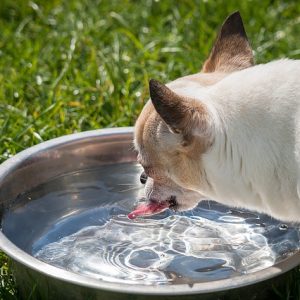


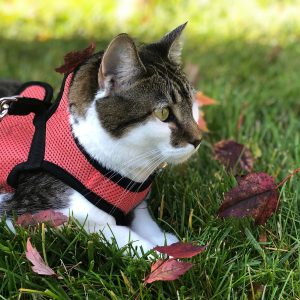
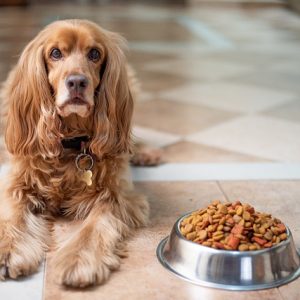
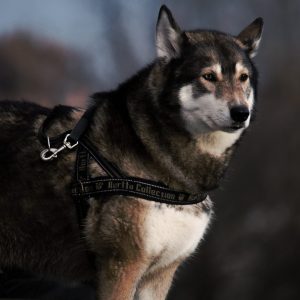
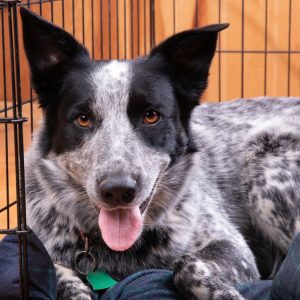




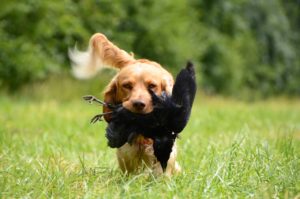
No comment yet, add your voice below!